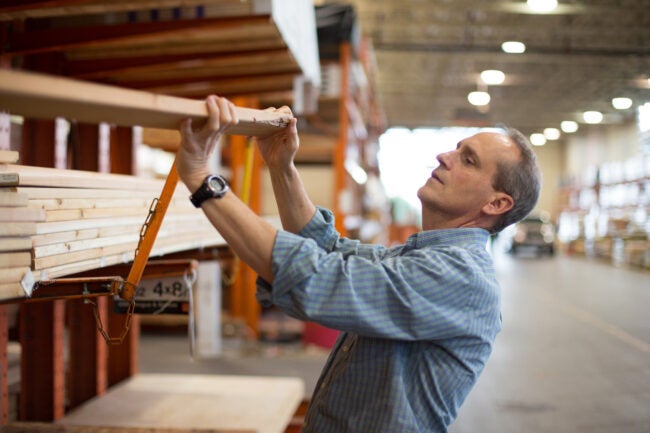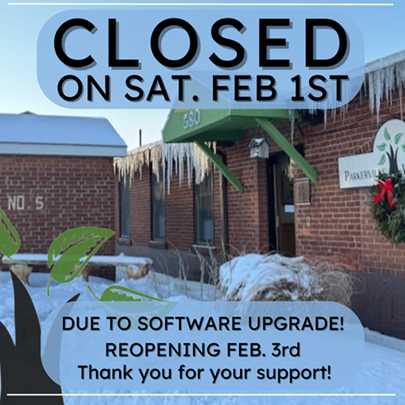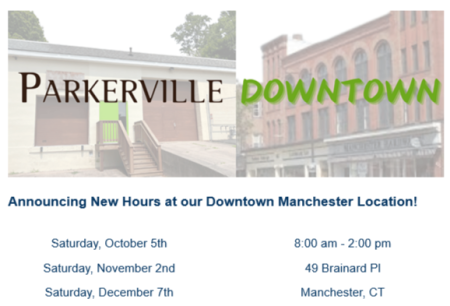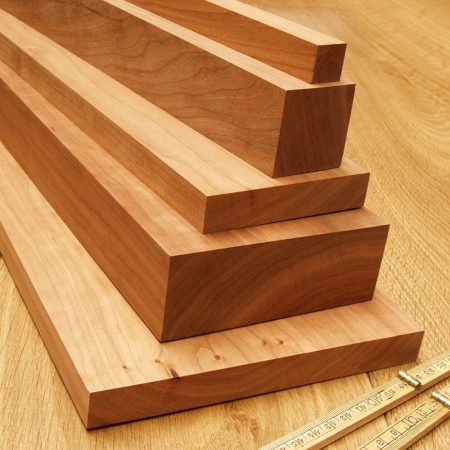August 9, 2023 | 5 Min Read | Parkerville

In this article, we’ll provide you with an overview of the terminology most commonly used in the lumber industry, such as:
A “quarter” system is commonly used in the hardwood lumber industry when referring to thickness. For example, a measure of “4/4″ refers to a board that is 1 inch (1”) thick. A board that is “6/4” is “1 1/2” inches thick and so on. Lumber is typically rounded to the nearest quarter measurement.
Most of the hardwood lumber in the United States and Canada is graded according to the rules established by the National Hardwood Lumber Association (NHLA). In fact, the NHLA grading rules form the basis for much of the international hardwood lumber trade. The standard grades of hardwood lumber as defined by the NHLA (in descending order of quality) are FAS, FAS 1-Face (F1F), Selects, No. 1 Common, No. 2A Common, No. 2B Common, Sound Wormy, No. 3A Common, and No. 3B Common. In practice, some of the above grades are rarely used in the commercial trade and others are typically combined. For example, FAS and FAS 1-Face are usually combined and sold as “Face And Better”, FAS and Selects as “Select and Better”, No. 1 Common and Selects as “No. 1 Common and Better”, and No. 2A Common and 2B Common as “No. 2 Common”.
Grading is based on the size and number of clear cuttings that can be obtained from a board when it is cut up and used for furniture or other products. The higher grades require wider and longer cuttings of clear wood than the lower grades. The specified clear face yield is also realized in a smaller number of cuttings with the higher grades. In the lower grades, the larger number of cuttings permitted provide more leeway in cutting between defects to realize the yield. With a few exceptions, grade is determined from the worst side of a board.
The surface measure of a board is used to determine the number of cuttings permitted for a given grade. For example, the FAS grade specifies a minimum size of 4″ x 5′ or 3″ x 7′ for cuttings taken from a board that is at least 6″ wide and 8′ long. The maximum number of cuttings is nominally four to produce a clear-face yield of 83 1/3 percent. If the surface area of the board is greater than 6 square feet, an additional cutting is allowed if the yield can be raised to 91 2/3 percent.
In selecting wood for a woodworking project, consider the size of the boards required. In many situations, lower grades are a more economical choice than the higher grades; in particular, consider using Select or No 1. Common grade boards rather than FAS if a relatively larger number of small, clear pieces are required.
Note: Unlike softwood grades, hardwood grades do not indicate the strength of the board. Another difference is hardwood grading does not require a certified or licensed grader. Purchasing from a well-established and reputable source such as Parkerville, greatly increases your chances of consistently obtaining accurately graded and high quality lumber.
FAS
FAS derives from an earlier grade known as “First and Seconds”. It is the best and most expensive grade. Boards 6″ and wider, 8′ and longer. Yields 83-1/3 percent of clear face cuttings with minimum sizes of 4″ x 5′, or 3″ x 7′. Suitable for fine furniture, interior joinery, solid wood moldings, and other applications where clear, wide boards are needed.
FAS 1-Face (F1F)
One face meets FAS requirements and the poorer face meets Number 1 Common grade requirements. Usually combined with FAS lumber, thereby providing at least one FAS face.
Selects
Face side is FAS, back side is No. 1 Common. Boards are 4″ and wider, 6′ and longer. Yields 83-1/3 percent clear face cuttings with minimum sizes of 4″ x 5′, or 3″ x 7′. A cost effective substitute for FAS when only one good face is required.
No. 1 Common
Often referred to as “Cabinet” grade in the USA due to its extensive use for kitchen cabinets. Boards are 3″ and wider, 4′ and longer. Yields 66-2/3 percent clear face cuttings with minimum sizes of 4″ x 2′, or 3″ x 3′. Provides good value, especially if relatively small pieces can be used.
No. 2A Common
Also known as “Economy” grade. Boards are 3″ and wider, 4′ and longer. Yields 50 percent clear face cuttings 3″ and wider by 2′ and longer. Grade of choice for US hardwood flooring industry.
No. 2B Common
Same as No. 2A Common, except that stain and other sound defects are admitted in the clear cuttings. An excellent paint grade.
No. 3A Common
Boards are 3″ and wider, 4′ and longer. Yields 33-1/3 percent clear face cuttings 3″ and wider by 2′ and longer. Economical choice for rough utility applications: crates, palettes, fencing, etc.
No. 3B Common
Boards are 3″ and wider, 4′ and longer. Yields 25 percent clear face cuttings 1-1/2″ and wider by 2′ and longer. Applications same as No. 3A Common.
Source: National Hardwood Lumber Association
Do you need help with a woodworking or wood-related project and don’t know where to turn? We’re here to help. Whether you’re looking for consultation and advice, want help with design options or you’re simply looking for the right selection of wood for your project, we’re more than happy to assist you. Need help when it comes to milling or other services? We can assist you with that as well.



In celebration of President’s Day, our selection of 4/4 Cherry is on sale! Regular 4/4 Cherry is discounted to $3.99 bf with 8+” wide at $4.49.
Sale runs until February 24th!
** We’re open until 7 PM on Thursdays **
